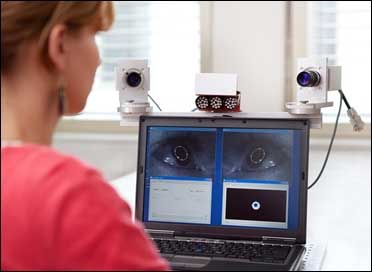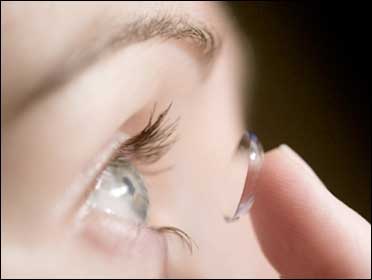 | « Back to article | Print this article |
Asleep while driving? A device can wake you up!
A team at the Fraunhofer Institute for Digital Media Technology in Ilmenau, Germany, has developed such a device that has built-in sensors which sound an alarm the moment they detect the driver's eyelids have closed.
Called the eyetracker, the device costs one-tenth the price of similar devices, according to Fraunhofer developer Peter Husar.
Click NEXT to read on...
Asleep while driving? A device can wake you up!
Those who do a lot of driving know how tiring long car trips and night driving can be. And a simple fraction of a second can decide the difference between life and death.
According to the German Road Safety Council, one in four highway traffic fatalities are the result of momentary driver drowsiness.
The special feature of the eyetracker is that it can be installed in any model of car.
"With conventional systems, every person whose line of vision is to be monitored has to complete more or less time-consuming preparations. Because every head, every face, every pair of eyes is different," he said.
"What we have developed is a small modular system with its own hardware and programmes on board, so that the line of vision is computed directly within the camera itself, " he added.
Click NEXT to read on
Asleep while driving? A device can wake you up!
Since the eyetracker is fitted with at least two cameras that record images stereoscopically, the system can easily identify the spatial position of the pupil and the line of vision, Husar was quoted by the German media as saying.
In fact, the information is fed out to the device via a standard interface. And, the eyetracker can be connected directly to the car's trip computer.
The device's in-built cameras evaluate 200 images per second to identify the line of vision of the driver, even when one moves one's head to the left or right.
Click NEXT to read on
Asleep while driving? A device can wake you up!
The Eyetracker is only roughly half the size of a matchbox and practically undetected when mounted behind the sun visor and in the dashboard. The tiny lenses are just three to four millimeters in diameter.
There are a host of applications for the Eyetracker. In medicine, the camera system can assist with eye operations by registering a patient's every eye movement.
With this technology, players of computer games can also look around themselves, without requiring a joystick to change their viewing direction.
It is also a valuable tool for marketing and advertising researchers with an interest in determining which parts of a poster or advertising spot receive longer attention from their viewers.



